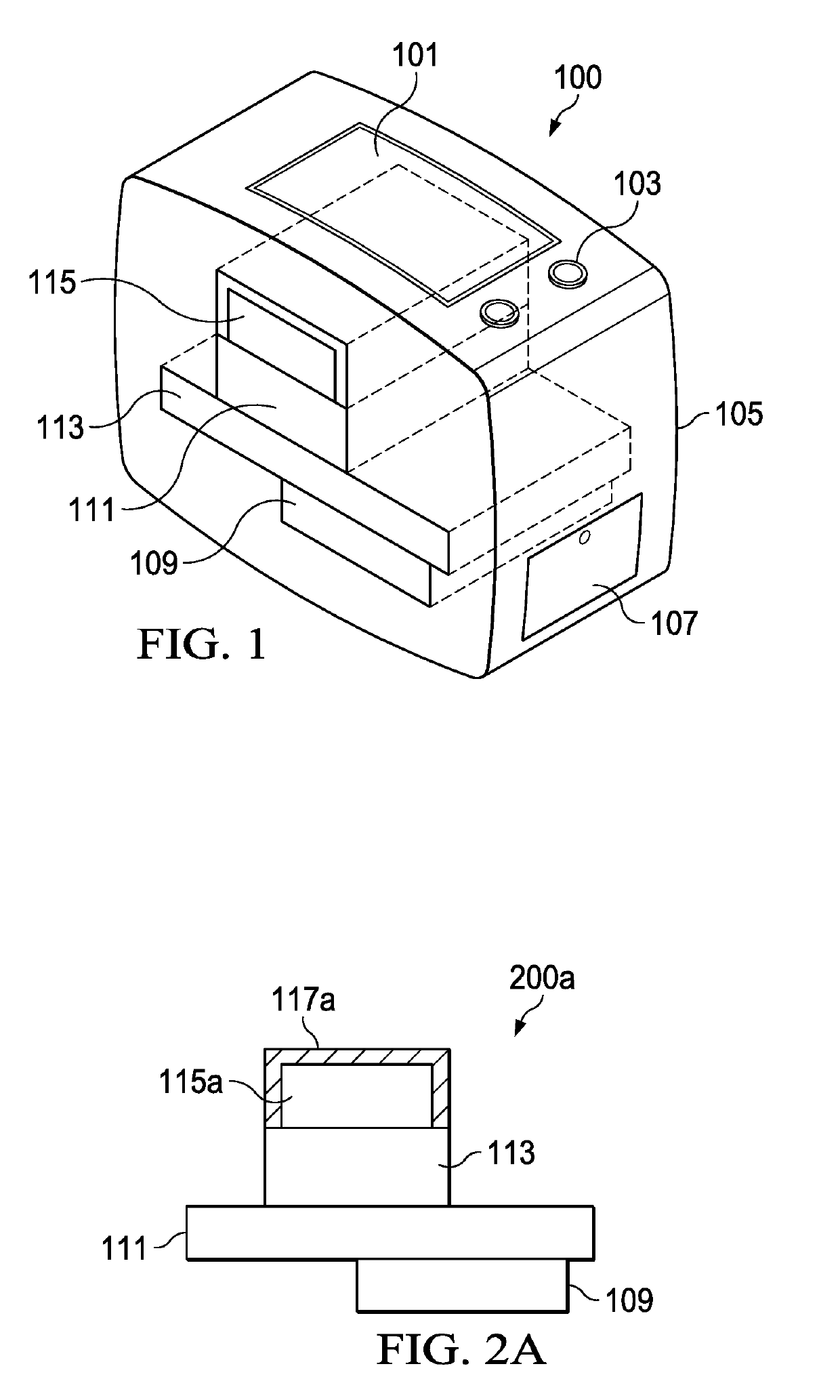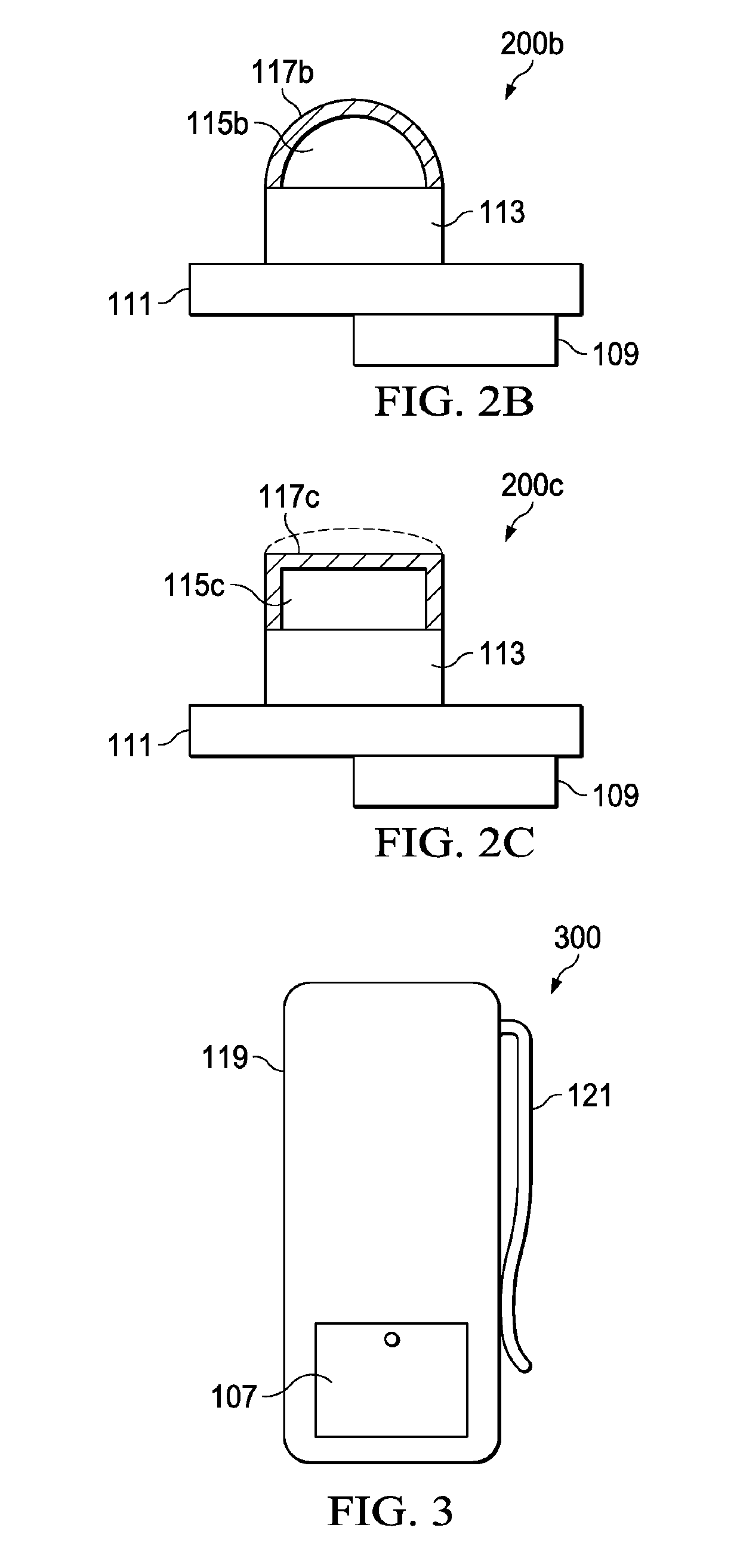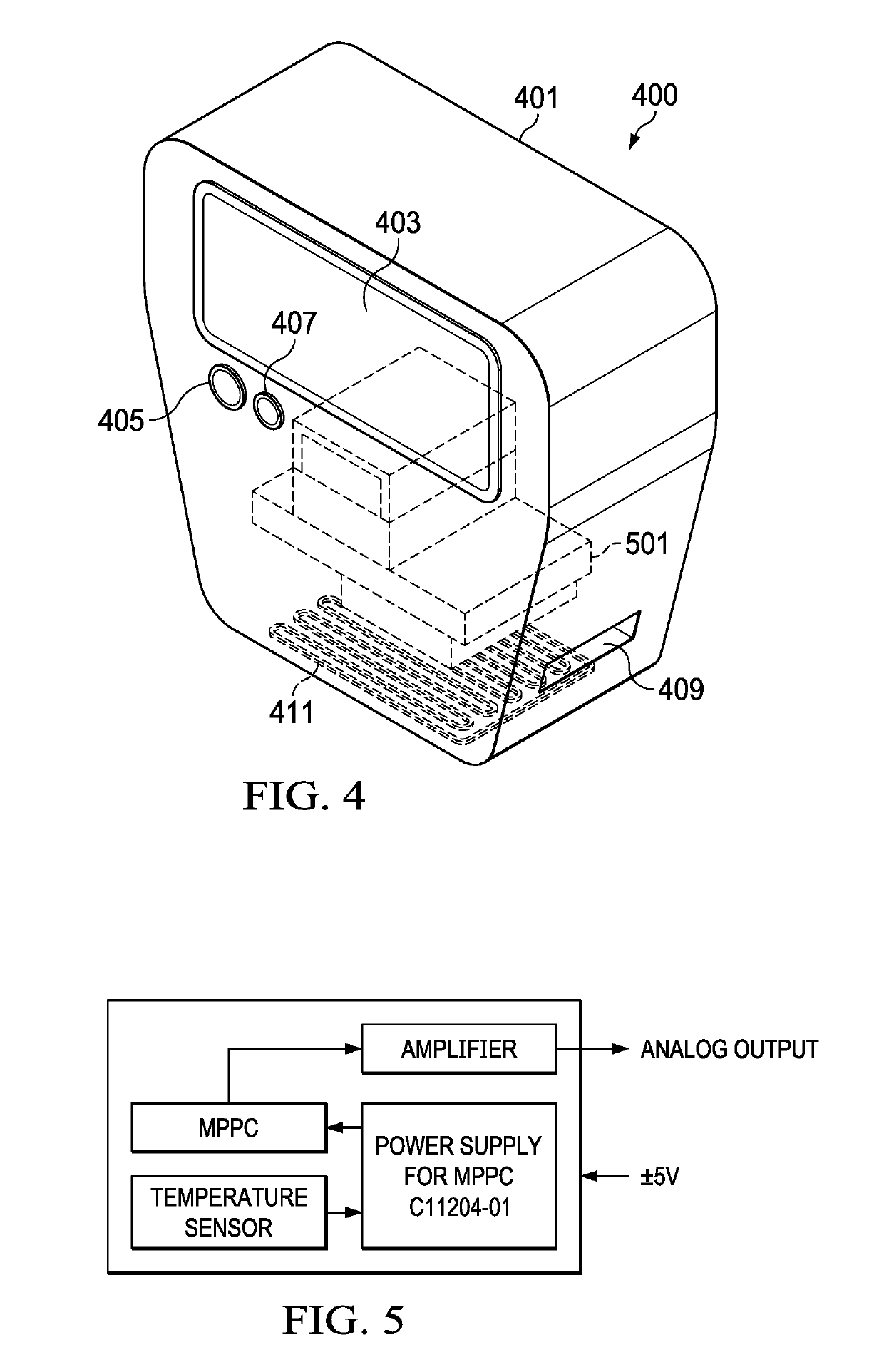Real time environmental radiation monitoring
a radiation monitoring and real-time technology, applied in the field of dosimeters, can solve the problems of increasing the harmful effects of long-term radiation exposure to health care professionals, radiology personnel experiencing high radiation exposure, medical practitioners at risk of the development of lasting health concerns, etc., and achieves the effect of high performan
- Summary
- Abstract
- Description
- Claims
- Application Information
AI Technical Summary
Benefits of technology
Problems solved by technology
Method used
Image
Examples
Embodiment Construction
[0062]The following descriptions and figures are exemplary only and should not be used to unduly limit the scope of the invention.
[0063]According to a study conducted by the Department of Radiological Technology in the School of Health Sciences at Tohoku University, the annual mean dose equivalent exposure during electrophysiology and interventional radiology procedures was 19.84±12.45 and 4.73±0.72 mSv / y to the neck for physicians and nurses respectively. Each of the 18 physicians in the study performed and average of 293.3±144.8 coronary angiography and 73.7±38.9 percutaneous coronary intervention (PCI) procedures annually. On average, each of the 7 nurses was involved in 754.3±352.3 coronary angiography and 189.4±PCI procedures annually. From this data, we estimate that the average exposure (per combined coronary angiograph and PCI procedure) to physicians and nurses is 0.054 mSv [0.0054 cGy] and 0.005 mSv [0.0005 cGy] respectively.
[0064]In order to effectively monitor these dose...
PUM
 Login to View More
Login to View More Abstract
Description
Claims
Application Information
 Login to View More
Login to View More - R&D
- Intellectual Property
- Life Sciences
- Materials
- Tech Scout
- Unparalleled Data Quality
- Higher Quality Content
- 60% Fewer Hallucinations
Browse by: Latest US Patents, China's latest patents, Technical Efficacy Thesaurus, Application Domain, Technology Topic, Popular Technical Reports.
© 2025 PatSnap. All rights reserved.Legal|Privacy policy|Modern Slavery Act Transparency Statement|Sitemap|About US| Contact US: help@patsnap.com



